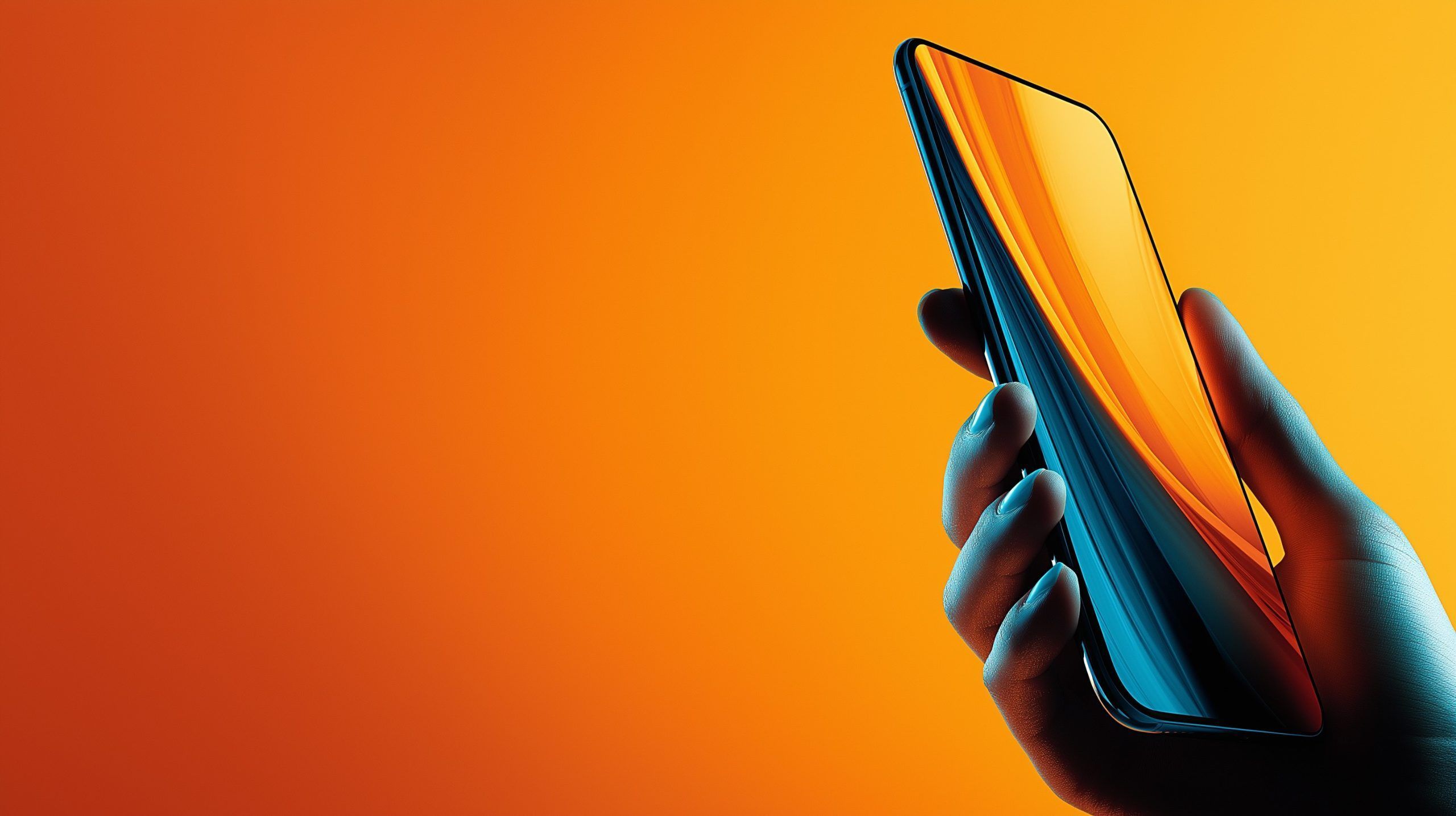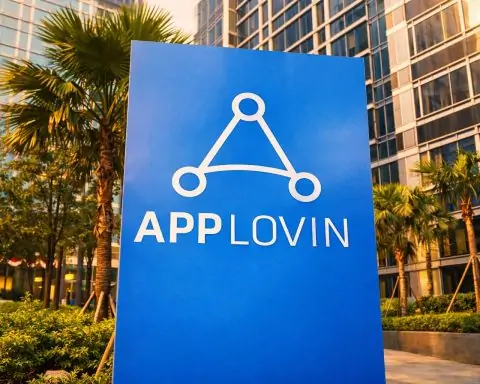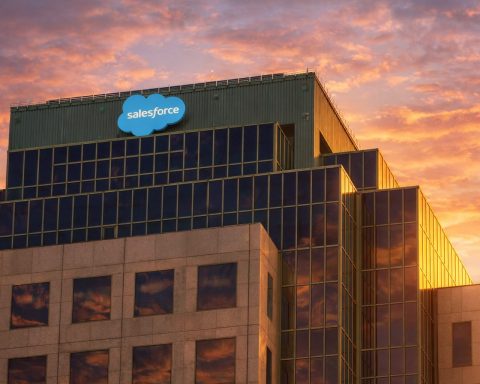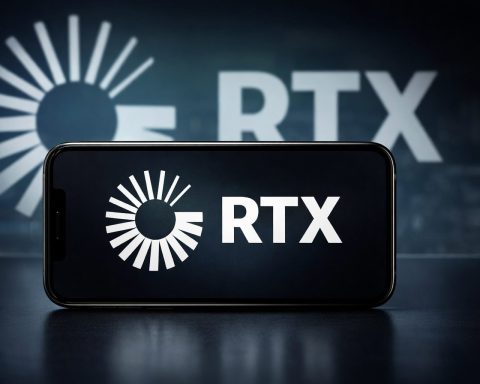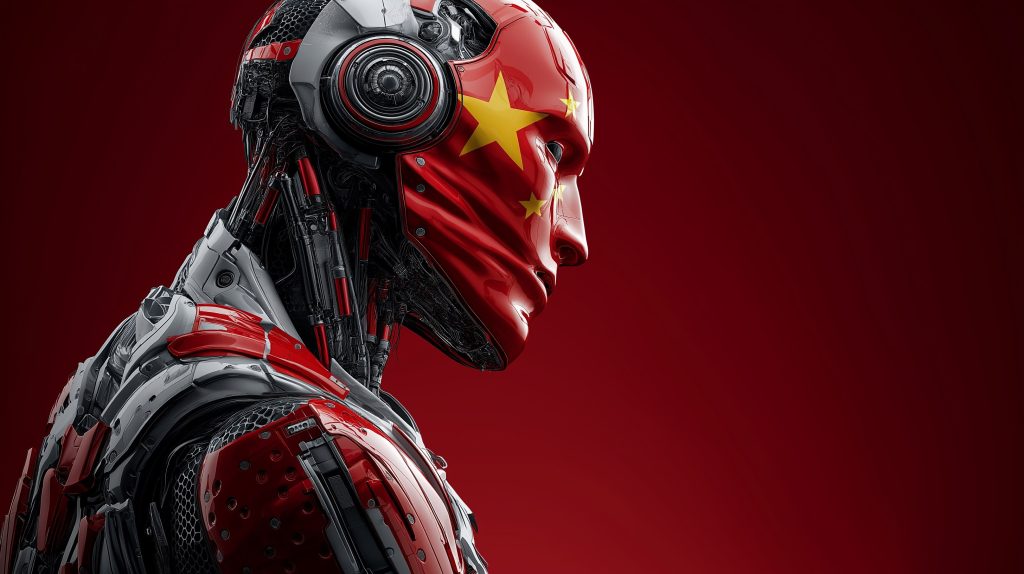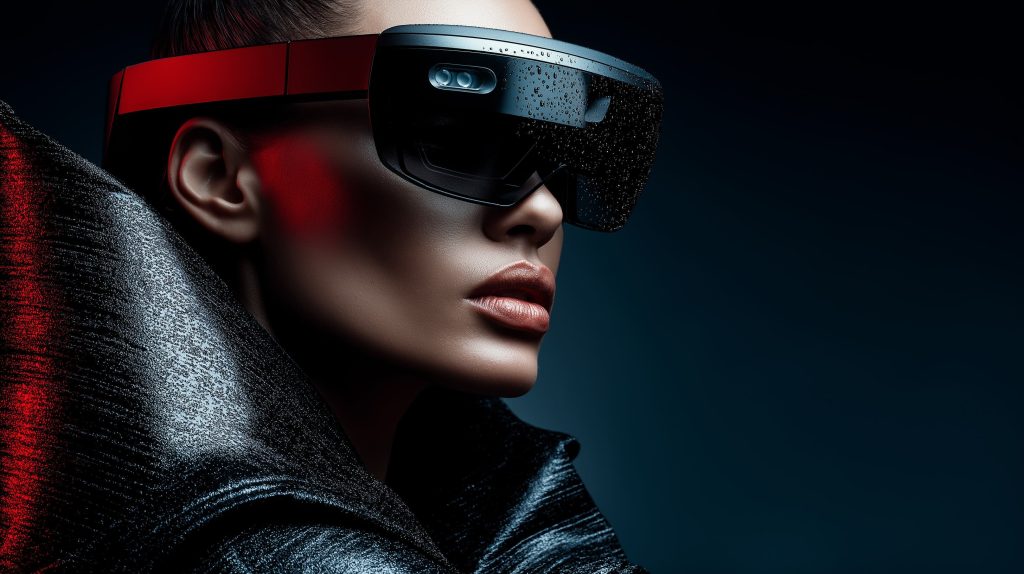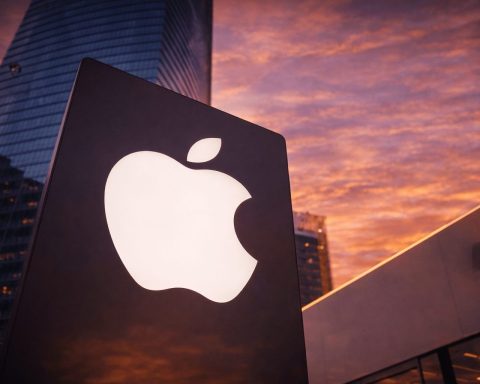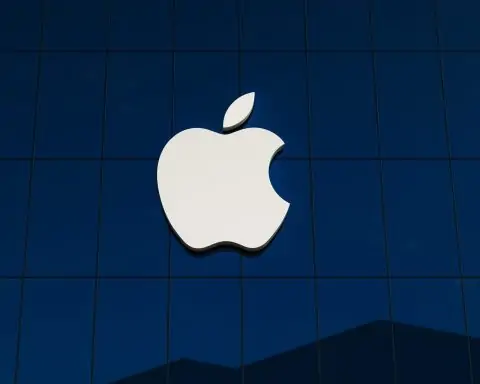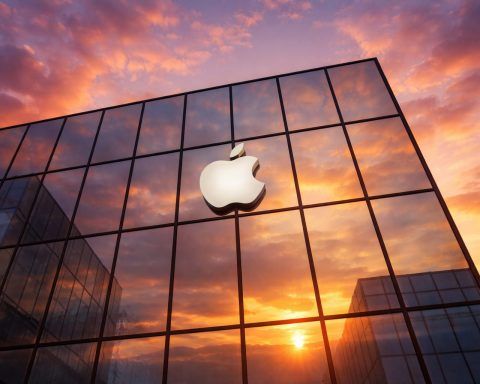- Google plans to merge ChromeOS into Android, creating a single OS across phones, tablets, and laptops, with Chromebooks and tablets running Android and a desktop-optimized Android with multi-window UI.
- Apple’s iOS 26 introduces Liquid Glass, which faced beta backlash, saw Beta 2 increase contrast and Beta 3 nearly remove the effect, and adds features like Add to Calendar from screenshots, Image Search, and an experimental Ask ChatGPT on screenshots.
- Samsung released Galaxy Z Fold 7 and Galaxy Z Flip 7, with the Fold 7 8.9mm thick when folded (4.2mm unfolded) and the Flip 7 adding a full 4-inch outer display and about 4,300 mAh battery, while the built-in S Pen was dropped this generation.
- Apple reportedly plans a foldable iPhone for 2026/27 using Samsung Display crease-free panels and a nearly invisible hinge, with mass production expected to begin in 2026.
- IDC’s Q2 2025 data show global smartphone shipments of 295.2 million units (up 1% YoY), with Samsung up 7.9% to about 58 million and Apple up 1.5% while China demand declined.
- Sony’s Xperia smartphone line appears to be exiting key European markets, with stock shortages across many countries and a possible retreat to Japan after 33 years in mobile.
- Louisiana’s LA Wallet digital driver’s license became the first nationwide digital ID accepted at TSA checkpoints, certified for a three-year pilot through 2028.
- The EU is piloting a five-country age-verification app that issues a secure digital age certificate to prove over-18 status without revealing identity under the Digital Services Act.
- Nothing released the Phone 3, featuring a 6.7-inch 120Hz OLED, Snapdragon 8+ Gen, three 50MP rear cameras, a $799 price, and its Glyph notification lights.
- OnePlus rolled out its on-device AI assistant Plus Mind on the OnePlus 13, triggered by a three-finger swipe, which can extract calendar details or summaries and store them in Mind Space.
Google’s Android-ChromeOS Unification: A “Future-First” Strategy
Google is officially confirming plans to merge Chrome OS into Android, aiming to consolidate its ecosystem across phones, tablets, and laptops [1] [2]. Android chief Sameer Samat hinted at this “ambitious move” in a recent interview, calling it “Google’s most ambitious move since Android itself” [3]. “We’re going to be combining ChromeOS and Android into a single platform… I think you see the future first on Android,” Samat said [4]. The goal? Stitch together Google’s fractured gadget empire into one seamless experience that can finally rival Apple’s ecosystem [5] [6].
This unification is a big deal. For years, Google’s platform was “powerful but disconnected” – Android phones, ChromeOS laptops, Nest gadgets, etc., all siloed [7] [8]. Apple, meanwhile, kept iPhone, Mac, Watch, and iPad tightly integrated (“perfect synchronization … everything just works” [9]). Google is now betting that a single Android-based OS across devices can change that. Future Chromebooks and tablets will run Android, not separate ChromeOS [10]. Under the hood, ChromeOS already shared the Linux kernel with Android; now Google is taking it further with a desktop-optimized Android supporting multi-window UI, Linux apps, browser extensions, and better external display handling [11].
“The future Google wants does not stop at your phone. It connects your entire digital life, with Android at the center,” writes Gizmodo, noting the stakes are enormous [12] [13]. If it works, we could see Android-powered laptops as real contenders to MacBooks and Windows PCs, and Google’s AI (Gemini) seamlessly embedded across every screen you use [14]. If it fails? Android remains a fragmented giant, “still chasing the cohesion and cultural weight it never quite had” [15].
Strategic advantages for Google: A unified OS means streamlined development (one engineering path, not two) and easier AI integration – “Android becomes a stronger base for Google’s Gemini-powered AI experiences on laptops, tablets, and foldables,” as one report noted [16]. It could also finally make Android tablets competitive with iPads by combining touch-friendly Android apps with ChromeOS’s productivity features [17]. From the user side, it promises “a single, seamless ecosystem across phones, tablets, and laptops” with a consistent app library on all [18]. Developers, too, would have fewer platform headaches and a larger unified user base (even Chromebook users running Android) [19].
There are questions of course. ChromeOS is known for fast updates and security – can Android match that on laptops? Will Android-as-desktop feel truly capable, or just a stretched phone UI [20]? Google appears to be testing the waters already: an Android “desktop mode” with windowed apps and even a “Pixel laptop” prototype running desktop Android have been spotted [21]. Tellingly, new Chromebooks have slowed to a trickle in 2025, hinting that a big shift is looming [22].
All of this underscores Google’s confidence in Android’s future. Samat even suggests that iPhone users who switch will realize what they’ve been missing. “I think you see the future first on Android,” he said, pointing to things like foldable phones and AI features that Android is pushing ahead on [23]. For example, Samsung’s Galaxy Z Fold 7 (more on that below) debuted with Android 16 on launch day – a break from the past where Samsung phones lagged months behind Google’s Pixels on updates [24] [25]. Google achieved this via a revamped development process (“Trunk Stable”) to deliver Android to OEMs in sync with new hardware launches [26]. As Samat put it, “we modified our entire development process… to make sure device manufacturers have [the latest Android] timed with their big phone releases” [27]. And with new quarterly “Android Drops” providing feature updates without full OS upgrades [28], Android is becoming more nimble – “more alive, more Apple-like, and infinitely more cohesive,” as Gizmodo quipped [29].
Bottom line: Google is finally getting its act together after a decade of platform chaos [30]. By fusing Android and ChromeOS and supercharging Android 16 with design polish and faster updates, Google wants to make Android the one platform to rule all your devices – and perhaps “own the next generation of computing” if AI and ubiquitous screens are the future [31]. It’s a bold play to challenge Apple’s ecosystem lock-in on a new level [32]. As Sameer Samat confidently asserts, those who switch from iPhone to Android will keep discovering “over and over again what they’ve been missing” [33] [34].
Apple’s iOS 26 Beta Backlash: Liquid Glass Woes and New Tricks
Meanwhile on Planet Apple, iOS 26 is deep in development – and making waves for its dramatic design overhaul called “Liquid Glass.” This new UI theme drenches the interface in frosted transparency and fluid glass-like effects for a “truly modern and immersive feel” [35]. It’s meant to celebrate the upcoming 20th anniversary of the iPhone with a “shimmery” all-glass aesthetic [36] [37]. But: in practice, the early betas have seen user backlash. Testers quickly complained the transparent UI made text and controls hard to read – “Elements overlapped without enough contrast… text hard to read and UI components difficult to distinguish,” as one report noted [38] [39]. In other words, Apple’s eye-candy was clashing with usability.
Apple has responded in recent beta updates by toning down the effect. In beta 2, “backgrounds and buttons gained more contrast,” shifting the look more toward a milky “frosted glass” similar to Samsung’s One UI blur [40]. And in the latest Beta 3, Apple all but pulled the plug on Liquid Glass: “readability is better across the board, but the original ‘Liquid Glass’ effect has almost vanished,” with a much heavier frosted appearance now [41]. The unique glassy transparency that was a headline iOS 26 feature is largely gone, sacrificed to make the UI usable. Apple “quietly [seems] to be giving up on Liquid Glass”*, Android Headlines observes bluntly [42] [43]. The change has “sparked a lively debate” among Apple fans – some are relieved that function won over form, while others lament that a bold design idea got watered down so fast [44]. The big question is whether any of Liquid Glass’s wow-factor will survive by the time iOS 26 officially launches, or if Apple will retreat completely to safer design [45]. (Below, you can see how much Liquid Glass was dialed back from Beta 1 to Beta 3.)
Apple’s new “Liquid Glass” UI in iOS 26 Beta 1 vs Beta 3 – Apple has increased contrast and frost, essentially removing most of the original transparent effect [46].
Why does this matter? iOS 26 is a milestone release – reportedly one of Apple’s biggest iOS overhauls in years, aligning with 2027’s 20th Anniversary iPhone which is rumored to have an all-glass design [47] [48]. In fact, Apple insiders say the iPhone “Glasswing” (as it’s codenamed) will feature curved glass edges, nearly no bezel, and no screen cutouts – basically a solid slab of glass [49]. The Liquid Glass interface was meant to “pair nicely with [that] simplistic, all-glass iPhone” [50]. So Apple experimenting with such a bold UI shows how it’s planning for hardware changes ahead. Mark Gurman notes Apple will likely still refine or re-introduce these effects when hardware can complement it (perhaps with transparent edges or new display tech) [51] [52]. But in the short term, Apple seems to be prioritizing user comfort – an unusual instance of them walking back a design due to public feedback mid-beta.
Controversial design aside, iOS 26 packs plenty of other new features. Apple is adding AI and “visual intelligence” smarts all over the OS. One standout: Screenshots are getting supercharged. Traditionally, you screenshot something just to save or share it as an image. In iOS 26, screenshots become actionable. For example, if you snap a screenshot of an event poster, you’ll see an “Add to Calendar” button – iOS will extract the event details (date, time, etc.) and automatically create a calendar entry for you [53]. No more manually typing in info from a flyer. Another new option: “Image Search.” Take a screenshot and you can instantly search for similar images or products online [54]. Apple says this works with Google, Etsy and other apps to identify things in the screenshot – if you see a cool lamp in a photo, you can highlight it and search for that product or similar ones [55]. It’s a clear nod to shopping use-cases and visual search trends. Perhaps most striking, iOS 26 lets you “Ask ChatGPT” about a screenshot [56]. Yes, Apple is (experimentally) integrating OpenAI’s ChatGPT: a new “Ask” button can send the image to ChatGPT and let you ask questions about it, with the AI analyzing the screenshot’s content and replying [57]. You can even highlight a specific part of the screenshot for ChatGPT to focus on [58]. It’s like Apple’s version of Google Lens, but with a conversational AI twist. This is a bold move for Apple, which usually relies on in-house Siri intelligence; here they’re explicitly tapping a third-party AI for powerful vision features. It underscores how AI assistants are becoming mainstream on phones – even Apple is willing to leverage ChatGPT to keep up.
Beyond that, iOS 26 and its sister updates (iPadOS 26, watchOS 26, etc.) entered public beta, giving eager users a taste. Apple is expected to release iOS 26 officially next year (perhaps re-numbered to align with “26” as in 2026). Notably, Apple skipped a bunch of version numbers – jumping from iOS 18 (current) to iOS 26 for next year – likely to match the year 2026 and mark a fresh start. This means iOS 18 is still the current public version, and Apple is not ignoring it: iOS 18.6 is in the works as a final update. Developers received iOS 18.6 beta 3 this week [59], suggesting Apple will push one more round of bug fixes and minor tweaks to iOS 18 devices in the coming weeks, even as attention turns to the flashy new iOS 26.
One more Apple leadership shake-up to note: longtime COO Jeff Williams is reportedly set to retire soon [60]. Williams has been essentially Tim Cook’s right-hand man (and was considered an heir apparent by some). His retirement, discussed on 9to5Mac’s podcast [61], marks a significant changing of the guard at Apple as it ventures into new product categories (like AR headsets) and major software redesigns. Apple hasn’t officially confirmed this, but insiders say Williams’ planned exit is part of a broader leadership transition.
Samsung’s Foldables & China’s Innovation Lead
Foldable phones are evolving fast – and Samsung just launched its latest flagship foldables, the Galaxy Z Fold 7 and Galaxy Z Flip 7. These devices show how far the tech has come (and also highlight how fierce competition from China has become).
Samsung’s Galaxy Z Fold 7 is now remarkably thin and light – just 8.9mm when folded (and 4.2mm unfolded) thanks to a new hinge and display tech [62] [63]. To achieve this, Samsung made a “trade-off”: the Fold 7 dropped the built-in S Pen stylus support that its earlier concepts toyed with [64] [65]. Many power users loved the idea of an S Pen in a Fold, but Samsung prioritized pocketability this generation. “Consumers wanted something thin and light,” explained Samsung exec Kang Min-seok, “so [we sacrificed] the S Pen.” He said customers should view the Fold7 as a “trade-off… where you lose one if you choose one” [66]. The good news: Samsung isn’t abandoning the S Pen forever. Kang confirmed the company is investing R&D into making a thinner stylus that could return in future foldables [67] [68]. They won’t include a pen “until there’s a certain level of perfection” and sufficient consumer demand, he added [69]. So perhaps the Galaxy Z Fold 8 or 9 might bring back an integrated S Pen once they can engineer one that doesn’t add bulk.
The Galaxy Z Flip 7, Samsung’s pocketable flip phone, also got notable upgrades. Samsung finally gave it a full-cover outer display – a 4-inch screen that spans edge-to-edge across the front when closed [70]. This was a feature fans clamored for (Motorola’s Razr had a big outer screen, making Samsung’s previous tiny window look dated). The Flip7’s larger cover screen lets you do much more without opening the phone. Samsung also boosted the Flip’s battery by ~300 mAh (to around 4,300 mAh total) [71], addressing one of the main drawbacks of prior Flip models (mediocre battery life). Early hands-on reports praise the Flip7’s more usable external screen and refined hinge.
Samsung is positioning the Fold7 and Flip7 as the culmination of its first-gen foldables. “Perfect hardware innovations that complete the first generation of foldables and open up the next generation,” Kang Min-seok said of the new models [72]. Indeed, this is Samsung’s 5th year of foldable phones (starting with Fold in 2019), and by now the hardware is mature: the Fold7 is as slim as a regular phone when closed, and the Flip7 addresses past complaints. Reviewers note the Fold7 feels much more polished – the hinge gap is basically gone, weight is down, and it launches with the latest Android 16 out of the box (no software lag) [73] [74].
However, a Wired report this week delivered a reality check: “Samsung’s new phones show how far ahead China is on innovation,” it declared bluntly [75]. In China, domestic brands are pushing foldables faster and further. For instance, Honor beat Samsung to market by a week with a foldable under 9mm thin (the Magic V5), just to claim bragging rights of being 0.1mm thinner [76]. More substantively, in early 2025 Oppo launched the Find N5 – an 8.9mm-thick foldable (like Fold7) but with stylus support on both inner and outer screens [77] (something Samsung removed this year!). Oppo also used an advanced silicon-carbon battery giving it 5,600 mAh capacity vs Samsung’s 4,400 mAh in the same thickness [78]. It even supports 80W charging, while Samsung is still at 25W [79]. In short, a six-month-old Oppo foldable outclasses the brand-new Galaxy in battery and features. Another example: back in Sept 2024, Huawei unveiled the Mate XT, a “trifold” device that folds twice to go from a 6.4-inch phone to a 10.2-inch tablet [80]. Despite two hinges, the Mate XT was only slightly thicker than Samsung’s Fold6 [81] [82]. Many expected Samsung to tease a tri-fold concept at its event – it didn’t. Later Samsung only said it’s “working hard” on a tri-fold for end of 2025 [83]. By then, Chinese OEMs will be on their second-gen trifolds.
What’s driving this innovation gap? Chinese consumers have embraced foldables more than any other market. “China is the largest foldable market globally due to the appetite for differentiated smartphones… Two out of three foldable phones sold globally are in China,” notes Counterpoint Research VP Neil Shah [84]. Experienced Chinese users (on their 5th or 6th smartphone) “actively seek unique and advanced devices,” he adds [85]. In contrast, Western buyers are still conservative – foldables are ~1% of sales in the US & Europe [86]. So Chinese brands iterate rapidly to cater to their home market, while Samsung (and Apple, which has none yet) play it safer for a global audience that’s lukewarm on foldables. As a result, many cutting-edge models never leave China, and Western consumers don’t even see the most innovative designs unless they follow tech news closely.
Samsung is still the global foldable leader by sales, but the Wired piece argues it’s at risk of falling behind technologically. It accused Samsung of “iterative progress loop… dull and already a step behind” Chinese rivals [87] [88]. Samsung’s 2025 upgrades (thinner, a new hinge) feel modest compared to the leaps happening in Shenzhen labs. “Cutting-edge tech is beginning to look rather blunt in Samsung’s hands,” Wired wrote, noting disappointment that Samsung didn’t leap ahead this year [89]. Samsung seems aware of this – hence it teased things like tri-folds for the future and even ran a public survey (more on that later) asking if consumers would accept thicker phones for new features (like magnets). The foldable race is far from over, and Samsung’s next move (maybe the Fold8 with S Pen return, or something radical in 2025) will be critical as Chinese brands eye global expansion with their foldables.
On a related front, Apple is finally preparing to enter the foldable fray – albeit slowly. Multiple reports this week say Apple’s first foldable iPhone is in the works, likely for 2026/27, and Apple will lean on Samsung’s display tech to do it. Samsung Display has “advanced crease-free” foldable OLED panels, and Apple is reportedly tapping them for its device [90] [91]. Analyst Ming-Chi Kuo claims Apple and Samsung are collaborating to start production of foldable screens by 2025, using Samsung’s tech and a special hinge component from supplier Fine M-Tec to ensure a durable, minimal-crease design [92] [93]. Apple wants a foldable where the fold line is nearly invisible – something Samsung’s latest Fold 7 improved on, but Apple thinks it can push further [94]. Apple also filed patents for its own multi-layered sensors to achieve 20 stops of dynamic range in a camera (more on that later), showing it’s serious about folding without trade-offs in camera quality.
According to Bloomberg, Apple’s first foldable might be more like a folding iPad mini. When unfolded, it could give an iPad-like large screen in a device that still fits in your pocket [95]. That would make app adaptation easier (running iPad versions). Timeline-wise, mass production might only begin in 2026, meaning a product in late 2026 or 2027 [96]. Interestingly, UBS analysts think Apple’s foldable might cost less than expected. Early speculation had a super-premium $2,500+ price, but UBS believes Apple’s supply chain strategy (using multiple suppliers and mature tech) could let it price the iPhone Fold more “aggressively” [97] [98] – perhaps closer to current Pro Max prices, to actually sell in volume. If Apple can undercut Samsung’s Fold price while delivering a sleeker design (with Samsung’s best screens), it could be a game-changer. But that’s still a couple years out. In the meantime, Samsung is reportedly even going to supply Apple with “crease-proof” ultra-thin glass that it’s developing [99]. It’s a bit ironic – Samsung helping Apple build an iPhone Fold that might compete with Galaxy Fold. But Samsung Display’s business is selling to everyone, even Apple, and Apple rarely passes up the best component tech (we saw this with OLED iPhone screens also coming from Samsung).
Speaking of Apple device rumors, the iPhone 17 (due in late 2025) is already churning in the rumor mill. Leaks suggest all iPhone 17 models will feature a redesigned Dynamic Island – Apple’s pill-shaped display cutout might shrink or change shape [100]. Some rumors even say the base iPhone 17 will adopt ProMotion (120Hz) and Always-On displays, previously Pro-only features, as Apple trickles high-end features down. The 2025 lineup might also introduce a new model named “iPhone 17 Air.” This could be a lighter, maybe lower-cost flagship variant (akin to how MacBook Air denotes thin/light). One leak claimed Apple had a “Sky Blue” color planned for iPhone 17 Pro, but scrapped it to use that blue on the iPhone 17 Air instead [101]. That suggests the Air might be a distinct device, perhaps with its own color palette or design tweak (could “Air” mean a thinner chassis?). It’s conjecture for now. We do know the iPhone 17 Pro will almost certainly debut Apple’s A19 chip on a next-gen TSMC process [102], continuing Apple’s silicon lead. And camera upgrades are expected (possibly a new periscope zoom on smaller Pro, since iPhone 16 Pro Max gets one this year). Interestingly, Mark Gurman also mentioned an “iPhone 17e” in Apple’s product roadmap [103]. This might be a codename or could imply a new “e” (economy?) model coming early 2026, separate from the main fall 2025 iPhone 17 launch [104]. Some speculate Apple could replace the aging iPhone SE with an “iPhone 17e” that uses iPhone 16/17 design but at a lower price, perhaps in spring 2026. It’s unusual for Apple to have mid-cycle phone launches, but the iPhone SE (2022) is getting old, and Apple might want a fresh budget offering by then. We’ll keep an eye as “17e” evolves – it’s rare to hear of an “e” suffix from Apple.
For those considering an iPhone purchase now: many tech experts are loudly saying “don’t buy one right now.” Both the Wall Street Journal and CNET published pieces advising consumers to wait with new iPhones around the corner [105]. Apple’s iPhone 16 series is expected in just 8-9 weeks (early September 2025) and should bring camera upgrades, new chips, and possibly a slight design refresh. More importantly, Apple often cuts prices on older models after new ones launch. “Timing matters more than you think,” one columnist wrote, noting how buying an iPhone in July means it’ll feel outdated almost immediately when the September announcement hits [106]. Even Apple’s own retail employees subtly hint at this to customers. Unless you’re in an emergency, the best time to buy an iPhone is right after new models launch (for the latest tech) or during holiday sales when prices dip. Those who just want a good deal on an iPhone 15/15 Pro might actually get one soon – once iPhone 16 is unveiled, expect Apple and carriers to discount the 15 lineup. So, the consensus: hold off a few more weeks if you can.
Mobile Market: Samsung Back on Top, Apple Slips in China
New industry data on global smartphone shipments in Q2 2025 shows a mixed picture: modest growth overall, but with clear winners and losers [107]. According to IDC, smartphone makers shipped 295.2 million units in April–June, up just 1% year-on-year [108]. That’s slower growth than Q1’s 1.5%, indicating the market is basically flat and still far below pre-2020 levels. Economic uncertainty and tariffs are partly to blame – buyers are cautious with big purchases amid inflation and trade tensions [109] [110]. Lower-end devices in particular saw weak demand as price-sensitive consumers hold off (IDC’s Nabila Popal noted that “economic uncertainty compresses demand at the lower end… low-end Android is witnessing a crunch” [111] [112]).
One region stood out: China’s smartphone demand declined in Q2, even after some carriers tried offering subsidies to spur sales [113]. It wasn’t enough – Chinese consumers just weren’t upgrading phones in big numbers. Apple was notably hit in China, with iPhone sales there dipping ~1% from last year [114]. That aligns with anecdotal reports that Chinese brands (like Huawei’s revived models and others) have been clawing back share, and that Apple’s iPhone 15 (launched last fall) saw a shorter sales spike. Apple still held global share steady thanks to other markets, but China’s softness is a warning sign.
The big winner in Q2 was Samsung. Samsung’s shipments jumped +7.9% year-on-year to about 58 million units, per IDC – the highest growth among top vendors [115]. This likely reflects the strong performance of the Galaxy S24 series (launched early 2025) and perhaps Samsung’s success in mid-range A-series phones. By contrast, Apple’s shipments grew only +1.5%, roughly keeping pace with the market and maintaining its #2 position [116]. Samsung thus widened its lead at #1 in unit terms. We’ll see if Samsung’s momentum continues into Q3 with the new foldables and if Apple rebounds with the iPhone 16 launch.
Other players: Xiaomi, Oppo/Vivo, etc., haven’t released full numbers yet via IDC, but likely stayed flat or slight decline (they often suffer when China’s market is down, though they pick up some of Huawei’s vacated share). Interestingly, IDC in May slashed its full-year 2025 forecast for smartphone shipment growth to 0.6% (from 2.3%), basically predicting a stagnating year [117]. The combination of “tariff-driven uncertainty” (e.g. US-China trade policies, export controls) and consumers extending phone replacement cycles is creating headwinds [118]. People are simply keeping phones longer, especially budget phones where there’s less impetus to upgrade yearly.
One strategy phone makers have: try to upsell features like AI even on mid-range phones to entice upgrades. IDC noted vendors are “pushing higher price points by offering AI in more affordable devices” [119] [120]. For instance, we’re seeing $300-$400 phones now touting AI camera enhancements or personalized avatars – marketing gimmicks perhaps, but aimed at spurring demand.
It’s worth mentioning that Samsung’s Q2 performance was helped by the fact it launched its flagship S-series earlier than usual (January 2025 for S24, vs previous years often Feb/March). That gave it a full quarter of S24 sales. Also, Samsung has been aggressively targeting enterprise and government sales for smartphones, which could be paying off. Apple’s flat-ish performance is typical in summer quarters as consumers start waiting for the fall iPhone launch. Apple usually sees its peak in Q4 (holiday season).
In terms of revenue and profits, Apple likely still leads by far (iPhones capture ~80% of global phone profits historically). But unit share tells us about platform spread – Android vs iOS shipments still around 4:1 globally.
One more intriguing stat: “In the face of challenges… the 1% growth stands as a critical indicator the market is poised to return to growth,” said IDC’s Anthony Scarsella [121]. That’s a hopeful spin – essentially saying hey, at least it’s not shrinking. The industry is looking to 2026 for a real rebound, maybe as 5G Advanced and new form factors (AR glasses? rollable screens?) arrive to excite consumers again.
And speaking of struggling markets, a notable story from Europe: Sony appears to be withdrawing its Xperia smartphones from key markets. Long a niche player, Sony’s smartphone division may finally be throwing in the towel outside of Japan. Reports noted that Sony’s Xperia models have gone “out of stock” across many European countries with no new stock coming, and carriers have dropped Sony phones [122]. After 33 years in the mobile phone business (Sony’s first phones date back to early 90s and the Sony Ericsson era), the Xperia brand could vanish from shelves [123]. Sony hasn’t officially announced an exit, but all signs point to a retreat: it might focus only on Japan (where Xperia has some loyal fans and carrier deals) and maybe a few Asian/Latin American markets. Android Authority reported “Sony phones are disappearing across key markets”, calling it the “end of the Xperia era” [124]. Enthusiasts lament the loss – Sony made some genuinely great phones (the Xperia 1 V camera phone is beloved by mobile photographers), but business-wise they couldn’t compete on price or carrier distribution. If Xperia bows out globally, it will join LG, HTC, and other once-major brands that exited the smartphone race in recent years. The mobile market is increasingly dominated by just a few giants (Apple, Samsung, and a handful of Chinese firms). For consumers, that means fewer choices – and possibly less quirky innovations like Sony’s 4K phone displays or ultra-wide 21:9 screens. We’ll pour one out for Xperia if this truly is the end.
New Apps and Services: Sun, Fun, and Security
It was an interesting week for new apps, from a Twitter co-founder’s side project to a dating app for Disney fans:
- Jack Dorsey – yes, the Twitter (X) co-founder – launched a new app called “Sun Day”. And no, it’s not another social network (though he launched one of those last week too – an encrypted messenger). Sun Day is all about tracking your sun exposure and Vitamin D. The app (currently in TestFlight beta on iOS) uses your location to pull the UV index and daylight info for where you are [125]. You input your skin type and clothing (since those affect sunburn/vitamin D rates), then you manually toggle when you step into the sun [126]. Sun Day will estimate how much Vitamin D your skin is making and how long you can safely stay in the sun without burning [127] [128]. Essentially, it’s a health tool for optimizing your sunshine – get enough for vitamin D (important for mood, immunity, etc.) but not so much that you fry your skin. The app even gives notifications like a “time to seek shade” warning. Dorsey built it as a weekend coding project (using an AI coding tool, interestingly) and open-sourced the code [129]. It’s quite niche, but reflects Silicon Valley’s wellness obsession (Dorsey is known for his extreme wellness routines). The Verge cheekily noted, “the Twitter co-founder is vibe coding again” [130] – referencing Dorsey’s tweet calling his hobby projects “vibe coding.” This was Dorsey’s second new app in a week, the first being a Bluetooth-based messenger called BitChat (a decentralized chat app). It’s kind of wild: one minute he’s running a $44B company, the next he’s hacking together indie apps. But that’s Dorsey for you. Sun Day taps into a real concern though – many people (especially desk-bound techies) are deficient in vitamin D, and also we’re all warned about sunburn. Now you can quantify both. As one report quipped, “Now Jack Dorsey has built an app to track your vitamin D” [131] – something no one expected, but here we are.
- On a very different note, Disney adults now have their own dating app. It’s called “Single Riders,” named after the single-rider lines at Disney theme parks. The app is designed “for adult Disney fans” looking for love [132]. The idea is simple: if Disney movies, characters, merch and park trips are a huge part of your life, you probably want a partner who gets it. Single Riders aims to match people through their Disney fandom. You can imagine profiles listing favorite Disney songs, which Disney character you most identify with, etc. The creators are even recruiting beta testers by appealing to folks’ desire to find their Mickey or Minnie. Reactions have ranged from “aww, happily ever after!” to playful eyerolls about “Disney adult” culture. But hey, niche dating is big now (there are apps for farmers, sea captains… why not Disney lovers?). One ABC report said “a new app could help Disney lovers find their happily ever after” [133]. So if you’re a Disney princess in search of your prince (or vice versa), mark August 5th on your calendar – that’s when Single Riders is set to officially launch. Just be ready for a lot of Mouse-themed pickup lines 🐭.
- Digital IDs took a big step forward in the U.S.: Louisiana’s “LA Wallet” app – a state-issued digital driver’s license – became the first digital ID accepted nationwide. Governor Jeff Landry announced that the TSA has certified Louisiana’s LA Wallet as compliant with federal standards, so Louisiana residents can use the app at TSA airport checkpoints, federal buildings and courthouses across the country [134]. This is a pilot approval for three years (until 2028) [135]. It means if you’re from Louisiana, you can show your phone’s LA Wallet app in lieu of a physical ID when flying domestically, for example. That’s huge, as digital driver’s licenses have existed in a few states but weren’t widely accepted. “We are thrilled to see Louisiana utilizing innovative technology… enhancing the passenger experience at TSA,” said TSA Deputy Administrator Adam Stahl [136]. The feds will review it again in 2028 to ensure it stays secure and private [137]. Other states are watching closely – a number of states (Arizona, Maryland, etc.) have rolled out digital IDs in Apple Wallet or their own apps, but broad acceptance has lagged. In fact, Apple announced 8 more states are coming soon to the iPhone’s Wallet ID feature [138]. So by late 2025 or 2026, we might finally be able to leave the plastic ID at home in many cases. Privacy folks note, however, that how these apps verify identity and who has access to the data is crucial. Louisiana’s app complies with something called the Mobile Driver’s License (mDL) standard, meaning it should only share the info necessary (e.g. verifying 21+ age without revealing your address, etc.). The fact the TSA – notoriously strict on IDs – is on board is a big vote of confidence.
- Europe is tackling online age verification in a privacy-conscious way. The EU is piloting a prototype age-check app that could be used to prove (for example) that a user is over 18 without revealing their identity or other details [139]. Five EU countries will test this app, which generates a secure digital certificate of your age that websites could accept. The aim is to protect kids from harmful content or needing to upload passports everywhere. It’s part of a broader EU push with the new Digital Services Act that may require adult content sites and social media to verify user ages. By creating a government-backed age ID, the EU hopes to avoid everyone just scanning IDs to random websites (which is awful for privacy). This week the EU Commission said “minimising risks children face online” is a priority, and age verification tech is key [140]. We’ll see if it works – age verification is a notoriously hard problem. The UK tried a porn age block system years ago that collapsed. But if an EU solution works and preserves privacy, it could become a model globally.
- A quick note on mobile payments in Colombia: The country’s central bank and fintech firms are launching a new real-time payment network to “wage war on cash.” Cash is still king in Colombia for many transactions, but the government wants to change that (to improve financial inclusion and crack down on tax evasion). A fintech called Cobre rolled out a system for instant interbank B2B payments in Colombia [141]. Essentially, businesses can now transfer funds between banks in real time, rather than waiting days. This is similar to Brazil’s wildly successful Pix system, which has digitized millions of payments. Bloomberg reported that Colombia sees this as part of a “war on cash” – because digital payments are traceable and bring more people into the formal economy [142]. Over time they may extend it to person-to-person payments too. It’s a reminder that while in the US we debate Venmo fees and FedNow, many countries are leapfrogging with instant payment infrastructure at a national scale.
Noteworthy Trends & Tidbits
- AI everywhere on phones: OnePlus announced it’s rolling out its own AI assistant called “Plus Mind” to flagship phones. This isn’t a voice assistant like Siri, but an on-device AI that can analyze whatever’s on your screen and help with contextual actions. On OnePlus 13 models, a simple three-finger swipe will trigger Plus Mind [143]. For example, swipe up on a picture of an event poster and you’ll be prompted to add the event to your calendar – Plus Mind automatically grabs the date, time, and details into a new event [144]. Or swipe on a fashion website and Plus Mind will summarize the outfits shown and save that info for you [145]. All these clippings and summaries go into a special “Mind Space” app, where you can later search and revisit them [146] [147]. It’s very much like what Google is building with its “At a Glance” and screen-intelligence features, and what Apple is doing with those smart screenshots – the industry consensus is that AI should help users parse and act on the content they see. OnePlus is basically adding a Google Lens meets ChatGPT layer to everything on your phone. They also teased future Plus Mind features like AI Translation (likely real-time screen translation) and “AI Perfect Shot” for the camera, already in some markets and expanding [148]. This shows even smaller OEMs feel pressure to have an AI story in their products. By the way, OnePlus also launched a nifty 2-in-1 charging cable alongside this [149]: it has a split end so you can charge your phone (up to 80W fast charging) and your smartwatch (10W) from one cable at the same time [150]. It’s $29. Not AI, but a nice little accessory.
- Google’s Pixel phones are getting an AI glow-up too: Code leaks revealed Google’s preparing a major upgrade to the Pixel’s “At a Glance” widget (the thing on your home screen that shows weather, calendar, etc.). The new version, possibly branded “Gemini” (after Google’s upcoming AI model), will do way more. For instance, it will show live sports scores for your favorite teams right on the home screen [151] (something many have wanted). It might also integrate personalized smart info like package delivery alerts, commute updates, stock tickers, and contextual suggestions – basically Google Now reborn, but smarter. One leak called it “Pixel’s Now Bar-like upgrade” [152]. Another jokingly said “They took our jobs: Google AI replacing Pixel’s At a Glance” – implying the AI will curate everything so well you won’t need to dig into apps. Google is reportedly calling parts of this “Spaces” or “Gemini Space”, and it will tie into the Gemini AI that Google has been training as its next-gen answer to ChatGPT. Expect to hear more in the fall when Pixel 10 launches.
- Android 16’s Desktop Mode: We touched on Android possibly replacing ChromeOS – well Android 16 (coming next year) has a built-in Desktop Mode that is getting more refined. Tech writers who tried it say it “finally feels like a real desktop experience” when you plug an Android device into a monitor [153]. It supports freeform app windows, a taskbar, and now you can even pin your favorite apps to the taskbar easily [154]. One opinion piece went so far as to call Android 16’s Desktop Mode “the perfect successor to ChromeOS” [155] – arguing that ChromeOS essentially paved the way, and now Android can take over with more versatility. However, Chrome Unboxed (a ChromeOS-focused site) countered that ChromeOS isn’t going anywhere because it still offers a more robust browser-based experience and better laptop app support [156]. The two could coexist: imagine tablets and phones using Android Desktop Mode for casual productivity, while dedicated laptops still run ChromeOS. Either way, the lines between mobile and desktop OS continue to blur.
- “Dumb Phone Summer” is a thing: A quirky trend has some people intentionally ditching their smartphones or limiting them to basic “dumb phone” functions for the summer. Several media outlets wrote about this digital detox idea. WGN-TV did a segment titled “Today I Learned: Dumb phone summer,” highlighting folks who swapped out iPhones for flip phones or turned off social media apps [157]. Guides have popped up on how to make your smartphone dumber – e.g. enabling greyscale, turning off notifications, uninstalling addictive apps – to replicate the focus of a basic phone without fully giving up your device [158]. One journalist recounted “I swapped my smartphone for a dumbphone for 30 days” and found it both challenging and liberating [159]. The motivation is to be more present and reduce screen time during leisure months. Interestingly, this coincides with a study on parent-child interactions reported by CNN: even if parents aren’t actively scrolling, just having a phone nearby or glancing at it can reduce the quality of interaction with their kids (less eye contact, shorter exchanges) [160]. It’s a reminder that sometimes we need to disconnect to reconnect. Hence, dumb phone summer – even if just for weekends or vacations – is about reclaiming that balance. Tech companies themselves have noticed; both Apple and Google include “Focus” and “Wellbeing” modes to help. But some users go cold turkey with a $20 flip phone on the beach – because no one ever got addicted to a Motorola Razr V3’s tiny screen in 2005!
- Weird gadget of the week: A phone case that feels like human skin. Yes, you read that right. Researchers in France developed a prototype silicone phone case that has a skin-like texture and is pinch-responsive. It’s super creepy – you can tickle your phone or squeeze it and it “feels” it via pressure sensors. They even made it such that it “can even get sunburned” – the material changes color under UV like real skin, turning red if overexposed [161]. Outlets like Futurism dubbed it a “cursed phone case”. The inventors said it was to explore more natural tactile interactions with devices, but let’s be honest, it’s nightmare fuel. Social media had a field day with it, calling it “the most unholy tech accessory”. On a more humorous note, Advanced Television reported a study that “Brits prefer scrolling over sunscreen” – claiming a sizable percentage of young Britons got sunburned because they were too engrossed in their phones to reapply sunscreen [162]. So perhaps this skin-phone case burning in the sun is art imitating life?
- New camera tech: Photographers, rejoice – smartphone cameras are poised for another leap. Sony unveiled a new sensor (the LYT-828) that delivers 17 stops of dynamic range (that’s over 100dB) in a mobile image sensor [163] [164]. In plain terms, it can capture both extremely bright and very dark details in one shot, rivaling the dynamic range of some professional cinema cameras. This means far less blown-out highlights or crushed shadows in high-contrast scenes. The sensor is 50MP and likely intended for high-end smartphones or maybe automotive imaging. Not to be outdone, Apple has a patent for an even more advanced sensor design with a theoretical 20 stops of dynamic range [165]. Apple’s approach involves a stacked sensor with built-in noise correction on-chip [166]. Combined with their computational photography, future iPhones could produce images with unheard-of detail in tricky lighting. We might see an “HDR war” brewing in 2026-2027 phone cameras, with sensors capturing multiple exposure values per pixel. The end result: images where you can simultaneously see the filament of a lightbulb and the details in the dark corner of the room behind you – no flash needed. For context, the latest iPhone 15 Pros have around 12 stops of effective dynamic range in photos; 17-20 stops is a huge upgrade. This tech could also help AR applications (better scene understanding under mixed lighting).
- Speaking of cameras, Nothing’s new Phone (3) deserves mention. Nothing, the startup led by OnePlus co-founder Carl Pei, released the Phone (3) – their highest-end phone yet – and reviews came out this week. The Nothing Phone 3 is being called “a quirky, slick Android alternative” [167]. Its design continues the brand’s signature transparent back with flashing LED “Glyph” lights, but now those LEDs double as a mini rear display for notifications and even a camera viewfinder [168]. Spec-wise, it packs a 6.7-inch 120Hz OLED, Snapdragon 8+ Gen chipset, and notably three 50MP rear cameras (main, ultrawide, 3× telephoto) [169] [170] – a big step up from Phone 2. Reviewers like The Guardian’s Samuel Gibbs praised the phone’s bloat-free software and unique style: “Nothing OS has a fun pop-art dot-matrix style… slick and clutter-free,” he wrote [171] [172]. Performance is fast and “flies along” in daily use [173], though the chip isn’t the absolute top-tier, and it can run hot under extreme load [174]. The camera quality is solid but inconsistent – capable of great shots, but sometimes delivering dull images or varying color between the three lenses [175] [176]. “Overall, the Phone 3’s camera can be good but inconsistency keeps it from being as great as rivals at this price,” the review concluded [177]. Battery life ~40 hours (1.5 days) is decent if not class-leading [178]. Where Nothing really shines is the design and user experience – the “glyph” lights now support more functions, and Nothing promises 5 years of OS updates (though that’s a bit shy of Samsung’s 7-year support pledge) [179] [180]. At $799 / £799 for the base model [181], the Phone 3 is positioned against the likes of Pixel 9 Pro (which is $999) and other upper-mid flagships. One headline said “Nothing Phone 3 vs Apple iPhone 16: Which flagship is worth ₹80,000” in India, showing they’re confidently squaring off with big names. Nothing’s CEO Carl Pei even cheekily said other phones have become “boring” and promised Nothing will bring excitement – this follows that ethos with a phone that literally lights up and makes retro noises. For Android enthusiasts seeking something different, Phone 3 is indeed a breath of fresh air (transparent back and all).
- Motorola is apparently embracing the bling: The company teased an event on August 5th in collaboration with Swarovski (the crystal jewelry maker) [182]. Rumor has it they’ll unveil a “blinged-out Razr” foldable phone decked in crystals or a flashy design [183]. This harkens back to the bedazzled flip phones of the mid-2000s (think gold RAZR or Dior phone). TechAdvisor joked it “might bring back the worst flip phone trend” – i.e., ultra-gaudy luxury editions [184]. A Motorola teaser image even showed a silhouette of a Razr with sparkling elements. So, if you want your foldable phone to double as jewelry, Motorola’s got you. It’s a niche play (likely limited edition), but shows how phone makers are trying creative tie-ins to generate buzz. We might see a Razr 40 Ultra “Swarovski Edition” or such. Historically, these bling phones aren’t tech breakthroughs, just cosmetic, but they grab attention – and in markets like China and Middle East, luxury special editions can do well. We’ll know on Aug 5 if this is truly a crystal-studded Razr or just a marketing stunt.
- MagSafe for Android? Samsung sent out surveys to Galaxy users asking if they’d prefer a slightly thicker phone in exchange for built-in magnets to aid wireless charging and accessories [185] [186]. This refers to the new Qi2 standard, which incorporates magnetic alignment (essentially Apple’s MagSafe, now standardized). Many users have been wanting Android phones to adopt magnetic rings so that chargers snap on perfectly and magnetic wallets, stands, etc., can be used. Droid-Life flat-out told Samsung: “Yes, Samsung, we want Qi2 magnets built into the phone.” Samsung seems to be listening – this survey hint suggests the Galaxy S26 or S27 might include a MagSafe-like magnet ring. It would make sense: accessory ecosystems thrive when there’s a standard. Apple’s MagSafe has cases, wallets, car mounts. If Samsung joins, Android users could get the same convenience. The only con is a magnet might add a fraction of a millimeter to device thickness or interfere with some things (though not much). Based on responses, it’s likely Samsung will go ahead – the feedback from techies is that built-in magnets are a desired feature if done right [187] [188].
- Digital car keys expanding: Apple’s Car Key feature (which lets you unlock/start a car with your iPhone or Watch) is set to work with a lot more cars. Thus far it’s been mostly BMW and some Hyundai/Genesis models. But Apple reportedly is adding 13 new automotive brands to Car Key in the near future [189]. That could include giants like Ford, Mercedes, or others – we’ll see. Additionally, Apple is testing support for the Digital Key 3.0 and 4.0 standards from the Car Connectivity Consortium [190]. Digital Key 3.0 introduced Ultra Wideband support (for passive, walk-up unlock) – which Apple already has with BMW. Digital Key 4.0 goes further, enabling things like car keys that work over the internet (for remote sharing) and enhanced security. An industry interoperability test (“Plugfest”) was held recently, hosted by Apple, to ensure all these new digital keys from various phone makers and car makers work together [191]. MacRumors reports that improved Car Key sharing (via iMessage) and some UX tweaks may come in iOS 26 [192]. So soon, a lot more of us might leave the car fob at home and just use our phones. Android is doing similarly with its Digital Car Key (built on same standard) – Samsung and Google phones can now also store BMW, Kia, etc., keys in wallet apps. It’s slowly but surely gaining traction.
Finally, a pair of cybersecurity and policy notes:
- US taxes & payment apps: The U.S. Congress reversed a controversial IRS rule that would have required payment apps (Venmo, PayPal, CashApp, eBay sales, etc.) to issue tax forms for anyone receiving over $600 a year. That $600 threshold (down from $20,000 previously) caused an outcry among freelancers and casual sellers – it meant if you sold a used couch for $700 on Facebook Marketplace, you could get a 1099-K form and potential IRS scrutiny. This week, in a bipartisan move, lawmakers raised the threshold back up (reports suggest to around $5,000 or perhaps $10,000) as part of a larger bill [193]. Senator Bill Hagerty touted this as stopping “IRS snooping” on small transactions. Etsy, eBay and co. “applauded” the change, as it avoids burdening millions of users with confusing tax forms [194]. However, groups like the Tax Law Center criticized that this will “increase the deficit and make it harder for honest taxpayers to comply” [195] [196] – because some income that should be reported won’t be, and the IRS will have less visibility into gig economy earnings. It’s a debate of minimizing paperwork for the little guy vs. closing loopholes. For now, if you use Venmo to split dinner or sell old electronics occasionally, you won’t trigger an IRS form as easily as feared. The rule change came just in time, as the $600 rule was going to take effect for 2023 filings. Congress basically hit undo, pleasing casual users and online marketplaces.
- North Korea’s not-so-smart “smartphones”: A fascinating (and chilling) report from Daily NK (a South Korean outlet) described how North Korea’s mandatory smartphone app has evolved into a permanent surveillance tool. A few years ago, North Korea rolled out an app that citizens had to install, initially pitched as an digital ID and payment app. But gradually, updates have turned it into an all-seeing monitor that runs 24/7, tracking usage, logging messages, and even periodically screenshotting the device. The government can reportedly activate the microphone or camera as well. Essentially, it’s spyware that the populace is forced to use under the guise of a convenience app. This shows the extreme of how tech can be used by authoritarian regimes: the smartphone, usually a tool of personal empowerment, becomes Big Brother in your pocket. It’s a reminder to be vigilant about app permissions and how much control we cede – though in North Korea, users have no choice. Outside of NK, it also underscores why strong encryption and privacy controls are important to resist any similar impulses elsewhere.
That wraps up a jam-packed week in mobile tech. From Google’s ecosystem shake-up to Apple’s design dramas, Samsung’s foldables vs China’s innovators, and the endless march of AI and mobile gadgets – it’s clear the second half of 2025 has plenty in store. As always, we’ll keep you posted on the latest. In the meantime, maybe go get some sun (Jack Dorsey’s app will tell you how much!) and consider a little digital detox – those emails and tweets will still be there after a dumbphone weekend. Stay tuned for next week’s roundup! 📱✨
Sources:
- Lance Ulanoff, TechRadar – Interview with Sameer Samat on Android 16 and ChromeOS merging [197] [198]
- Luc Olinga, Gizmodo – Analysis of Google’s unified platform strategy [199] [200]
- Ayushmann Chawla, Hindustan Times – Google confirms ChromeOS-to-Android merge plans [201] [202]
- IDC via Reuters (Juby Babu) – Q2 2025 smartphone shipment data [203] [204]
- Neil Shah via WIRED (Andrew Williams) – Foldables in China statistics [205]
- Kang Min-seok via Android Central (Nickolas Diaz) – Samsung Fold7 “trade-off” and S Pen comments [206] [207]
- Android Headlines (Jean Leon) – Apple iOS 26 “Liquid Glass” beta changes [208] [209]
- 9to5Mac (Ryan Christoffel) – New features in iOS 26 screenshots (Add to Calendar, Image Search, Ask ChatGPT) [210] [211]
- The Verge (Dominic Preston) – Jack Dorsey’s Sun Day app details [212] [213]
- Governor of Louisiana – Announcement of LA Wallet digital ID acceptance by TSA [214] [215]
- Droid-Life – OnePlus “Plus Mind” AI tool explanation [216] [217]
- MacRumors – Mark Gurman on 20th-anniversary iPhone “Glasswing” and iOS 26 design [218] [219]
- The Guardian (Samuel Gibbs) – Nothing Phone (3) review observations [220] [221]
- Android Authority (Hadlee Simons) – Samsung Galaxy S26 camera leak (200MP, 50MP ultrawide) [222] [223]
- Biometric Update – Chinese OEMs testing under-display 3D face unlock cameras [224]
- Android Police (Chris Thomas) – Pixel 9 Pro on-device video generation (Veo 3) [225]
References
1. www.hindustantimes.com, 2. www.hindustantimes.com, 3. gizmodo.com, 4. gizmodo.com, 5. gizmodo.com, 6. gizmodo.com, 7. gizmodo.com, 8. gizmodo.com, 9. gizmodo.com, 10. www.hindustantimes.com, 11. www.hindustantimes.com, 12. gizmodo.com, 13. gizmodo.com, 14. gizmodo.com, 15. gizmodo.com, 16. www.hindustantimes.com, 17. www.hindustantimes.com, 18. www.hindustantimes.com, 19. www.hindustantimes.com, 20. www.hindustantimes.com, 21. www.hindustantimes.com, 22. www.hindustantimes.com, 23. www.techradar.com, 24. www.techradar.com, 25. www.techradar.com, 26. www.techradar.com, 27. www.techradar.com, 28. www.techradar.com, 29. gizmodo.com, 30. gizmodo.com, 31. gizmodo.com, 32. gizmodo.com, 33. www.techradar.com, 34. www.techradar.com, 35. www.androidheadlines.com, 36. www.macrumors.com, 37. www.macrumors.com, 38. www.androidheadlines.com, 39. www.androidheadlines.com, 40. www.androidheadlines.com, 41. www.androidheadlines.com, 42. www.androidheadlines.com, 43. www.androidheadlines.com, 44. www.androidheadlines.com, 45. www.androidheadlines.com, 46. www.androidheadlines.com, 47. www.macrumors.com, 48. www.macrumors.com, 49. www.macrumors.com, 50. www.macrumors.com, 51. www.macrumors.com, 52. www.macrumors.com, 53. 9to5mac.com, 54. 9to5mac.com, 55. 9to5mac.com, 56. 9to5mac.com, 57. 9to5mac.com, 58. 9to5mac.com, 59. machash.com, 60. 9to5mac.com, 61. 9to5mac.com, 62. www.androidcentral.com, 63. www.androidcentral.com, 64. www.androidcentral.com, 65. www.androidcentral.com, 66. www.androidcentral.com, 67. www.androidcentral.com, 68. www.androidcentral.com, 69. www.androidcentral.com, 70. www.androidcentral.com, 71. www.androidcentral.com, 72. www.androidcentral.com, 73. www.techradar.com, 74. www.techradar.com, 75. www.wired.com, 76. www.wired.com, 77. www.wired.com, 78. www.wired.com, 79. www.wired.com, 80. www.wired.com, 81. www.wired.com, 82. www.wired.com, 83. www.wired.com, 84. www.wired.com, 85. www.wired.com, 86. www.wired.com, 87. www.wired.com, 88. www.wired.com, 89. www.wired.com, 90. www.androidheadlines.com, 91. www.androidheadlines.com, 92. www.androidheadlines.com, 93. www.androidheadlines.com, 94. www.androidheadlines.com, 95. www.androidheadlines.com, 96. www.androidheadlines.com, 97. www.androidheadlines.com, 98. www.androidheadlines.com, 99. www.androidheadlines.com, 100. www.macrumors.com, 101. www.mactrast.com, 102. www.bloomberg.com, 103. www.bloomberg.com, 104. www.mactrast.com, 105. www.macrumors.com, 106. www.macrumors.com, 107. www.marketscreener.com, 108. www.marketscreener.com, 109. www.marketscreener.com, 110. www.marketscreener.com, 111. www.marketscreener.com, 112. www.marketscreener.com, 113. www.marketscreener.com, 114. www.marketscreener.com, 115. www.marketscreener.com, 116. www.marketscreener.com, 117. www.marketscreener.com, 118. www.marketscreener.com, 119. www.marketscreener.com, 120. www.marketscreener.com, 121. www.marketscreener.com, 122. www.imdb.com, 123. www.sony-semicon.com, 124. www.sony-semicon.com, 125. www.theverge.com, 126. www.theverge.com, 127. www.theverge.com, 128. www.theverge.com, 129. www.theverge.com, 130. www.theverge.com, 131. www.theverge.com, 132. www.facebook.com, 133. abc7.com, 134. gov.louisiana.gov, 135. gov.louisiana.gov, 136. gov.louisiana.gov, 137. gov.louisiana.gov, 138. www.imdb.com, 139. www.reddit.com, 140. www.reddit.com, 141. www.imdb.com, 142. ymcinema.com, 143. www.droid-life.com, 144. www.droid-life.com, 145. www.droid-life.com, 146. www.droid-life.com, 147. www.droid-life.com, 148. www.droid-life.com, 149. www.droid-life.com, 150. www.droid-life.com, 151. 9to5google.com, 152. 9to5mac.com, 153. www.androidauthority.com, 154. www.facebook.com, 155. www.androidauthority.com, 156. 9to5mac.com, 157. ground.news, 158. www.digitaltrends.com, 159. www.digitaltrends.com, 160. www.theverge.com, 161. ground.news, 162. ground.news, 163. www.sony-semicon.com, 164. ymcinema.com, 165. ymcinema.com, 166. ymcinema.com, 167. www.theguardian.com, 168. www.theguardian.com, 169. www.theguardian.com, 170. www.theguardian.com, 171. www.theguardian.com, 172. www.theguardian.com, 173. www.theguardian.com, 174. www.theguardian.com, 175. www.theguardian.com, 176. www.theguardian.com, 177. www.theguardian.com, 178. www.theguardian.com, 179. www.theguardian.com, 180. www.theguardian.com, 181. www.theguardian.com, 182. sgtalk.net, 183. sgtalk.net, 184. www.wired.com, 185. www.droid-life.com, 186. www.droid-life.com, 187. www.droid-life.com, 188. www.droid-life.com, 189. www.imdb.com, 190. www.sony-semicon.com, 191. www.sony-semicon.com, 192. www.sony-semicon.com, 193. finance.yahoo.com, 194. www.aol.com, 195. finance.yahoo.com, 196. www.globalbankingandfinance.com, 197. www.techradar.com, 198. www.techradar.com, 199. gizmodo.com, 200. gizmodo.com, 201. www.hindustantimes.com, 202. www.hindustantimes.com, 203. www.marketscreener.com, 204. www.marketscreener.com, 205. www.wired.com, 206. www.androidcentral.com, 207. www.androidcentral.com, 208. www.androidheadlines.com, 209. www.androidheadlines.com, 210. 9to5mac.com, 211. 9to5mac.com, 212. www.theverge.com, 213. www.theverge.com, 214. gov.louisiana.gov, 215. gov.louisiana.gov, 216. www.droid-life.com, 217. www.droid-life.com, 218. www.macrumors.com, 219. www.macrumors.com, 220. www.theguardian.com, 221. www.theguardian.com, 222. www.androidauthority.com, 223. www.androidauthority.com, 224. forums.macrumors.com, 225. www.reddit.com
